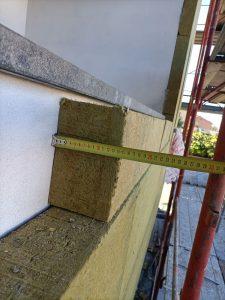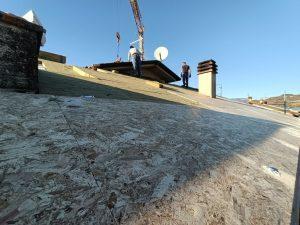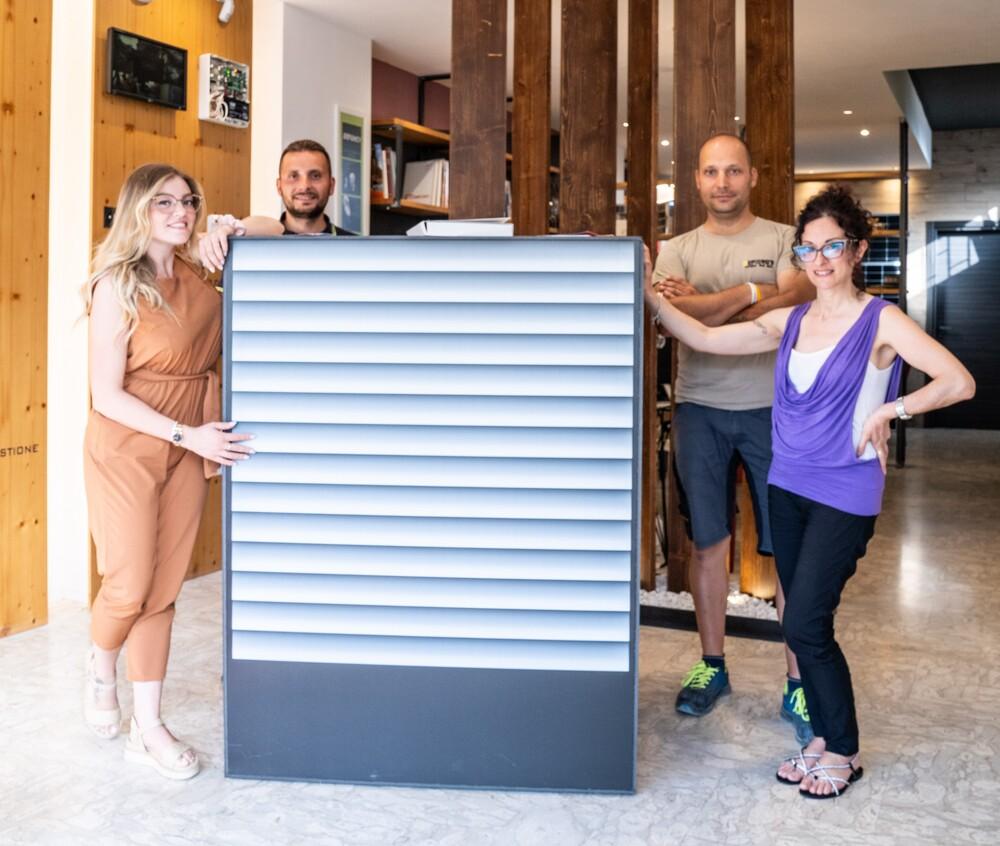By Patrizia Cherici
A new meeting with the established combination ‘ProjectHouse’ and ‘3Energy’, to address two new topics of extreme interest in the field of the future of construction and sustainable thermodynamics: ‘VMC’ and ‘thermal coats’. Speaking of all-round plant engineering, normally companies offer solutions such as boilers or pellet stoves, tools that however have a limit: they meet the winter needs, losing effectiveness in the summer months. On the contrary, the heat pump is already a generator that, in a single expense, manages to cover the needs of the whole year being able to generate both heating and cooling, even with water heat transfer fluid.

What problem can arise then when heating or cooling the house? If you open the windows for air exchange, you have a dispersion of cold in summer – and heat in winter. An excellent solution to overcome this drawback is to combine the single generator, the VMC (Controlled Mechanical Ventilation) service: it is an additional machine that guarantees the right air exchange in the rooms, with maximum reduction of heat loss, controlling the main parameters, such as temperature and humidity.
There are two types of VMC: ‘the centralized system’ and ‘the punctual system’. The first, being a more invasive installation, must be foreseen at the time of the design of the house ‘ex novo’ or a major renovation; In this case the machine is placed in the centre of the house and a certain volume of air is extracted (which varies depending on the type of building) from rooms where the air is most consumed, such as kitchens and bathrooms.
 The same amount of stale air, extracted from the house, is reintroduced into the most lived rooms, such as bedrooms or living rooms, taking it directly from the outside and treating it through a heating / cooling system, which takes the right temperature from that house and gives it to the reintroduced one, through a real intersection of flows: this mechanism neutralizes heat loss. “In the case of houses already inhabited instead” – they explain – “Through a less invasive intervention, we use the ‘punctual systems’: we make cores in the walls of the various rooms and in each one a single system is inserted, called ‘punctual’, which works with a simple power outlet and changes the air only in that particular room “.
The same amount of stale air, extracted from the house, is reintroduced into the most lived rooms, such as bedrooms or living rooms, taking it directly from the outside and treating it through a heating / cooling system, which takes the right temperature from that house and gives it to the reintroduced one, through a real intersection of flows: this mechanism neutralizes heat loss. “In the case of houses already inhabited instead” – they explain – “Through a less invasive intervention, we use the ‘punctual systems’: we make cores in the walls of the various rooms and in each one a single system is inserted, called ‘punctual’, which works with a simple power outlet and changes the air only in that particular room “.
These are, as can be deduced, niche products, highly innovative and with excellent results also from the point of view of energy saving. Precisely for this reason in the last two years, also being able to take advantage of the opportunity of the ‘super bonus’, ProjectHouse and 3Energy have proposed them, obtaining good results and excellent satisfactions since installing photovoltaic system, storage batteries and VMC system, the bills have almost completely zeroed.
 For the purposes of energy efficiency, however, the building/plant combination is fundamental: “In the past, only the insulation of the structures was intervened and, only later, on the plant engineering; But to achieve maximum efficiency, the combination of the two components is necessary. It is not possible, in fact, to think of making a quote for the installation of a particular system, without first making all the necessary assessments relating to the type, the individual characteristics of the building and the calculation of dispersions.
For the purposes of energy efficiency, however, the building/plant combination is fundamental: “In the past, only the insulation of the structures was intervened and, only later, on the plant engineering; But to achieve maximum efficiency, the combination of the two components is necessary. It is not possible, in fact, to think of making a quote for the installation of a particular system, without first making all the necessary assessments relating to the type, the individual characteristics of the building and the calculation of dispersions.
 Once the analysis of the building has been carried out and the weakest points of dispersion have been identified, the most suitable design choice is intervened, whether it is at the plant level, insulation or both”, they specify.
Once the analysis of the building has been carried out and the weakest points of dispersion have been identified, the most suitable design choice is intervened, whether it is at the plant level, insulation or both”, they specify.
Until a few years ago with the term ‘coat’, reference was made to the classic one made with polystyrene and therefore the effectiveness of the same was evident only in relation to the winter period: in the summer months, in fact, being polystyrene a plastic material, the insulating power is much poorer. To obtain the insulating effect even in summer, the material used to create the coat must not be a light material, but a material that makes mass and therefore heavy, in order to prevent the heat from outside from entering inside.
 So here come into play many other materials that yes have a higher price, but that nevertheless manage to completely cover the needs of a house, at 360 ° and throughout the year: “We can mention wood fibres, stone wool, glass wool, all high-density fibrous materials. It requires a greater thickness than polystyrene: it goes from 12 cm to 14/16 cm, so as to achieve the right compromise able to give efficiency all year round. Another important feature of these components – which guarantees in particular a beneficial insulation during the summer – is that they have a high breathability index; That is, on their own already, these coats contributes much less to mold formation and condensation. Especially in combination with VMC – which generates forced ventilation in the house, we are going to increase the benefits of air and therefore completely eliminate the production of mold”.
So here come into play many other materials that yes have a higher price, but that nevertheless manage to completely cover the needs of a house, at 360 ° and throughout the year: “We can mention wood fibres, stone wool, glass wool, all high-density fibrous materials. It requires a greater thickness than polystyrene: it goes from 12 cm to 14/16 cm, so as to achieve the right compromise able to give efficiency all year round. Another important feature of these components – which guarantees in particular a beneficial insulation during the summer – is that they have a high breathability index; That is, on their own already, these coats contributes much less to mold formation and condensation. Especially in combination with VMC – which generates forced ventilation in the house, we are going to increase the benefits of air and therefore completely eliminate the production of mold”.
“The strength we have – says Michela – is the synergy that is created between the tasks carried out by ProjectHouse, as part of the evaluation and analysis of the building, and the part concerning the plant engineering carried out by 3Energy; This leads to the formulation of a very complete estimate that fully covers the needs of those who turn to us, from structural, architectural and plant design, to the actual realization in the field of what has been designed, guaranteeing time optimization and economic savings”.

Info: ProjectHouse – 3Energy, Viale Nardi 18/A, Selci – San Giustino (Pg)
Tel. 333 5743924 / 392 8882316
Mail: projecthouse2012@libero.it – alessio.3energy@gmail.com
http://www.projecthouse.biz – http://www.3-energy.it
